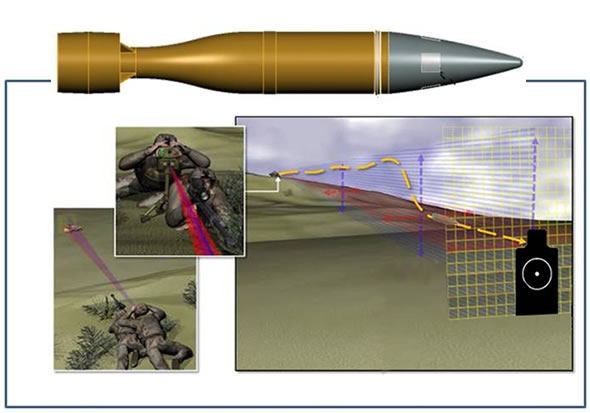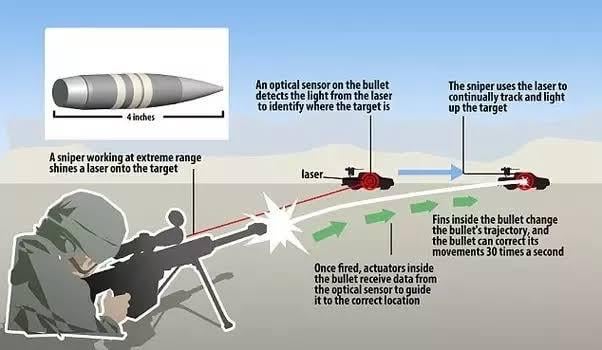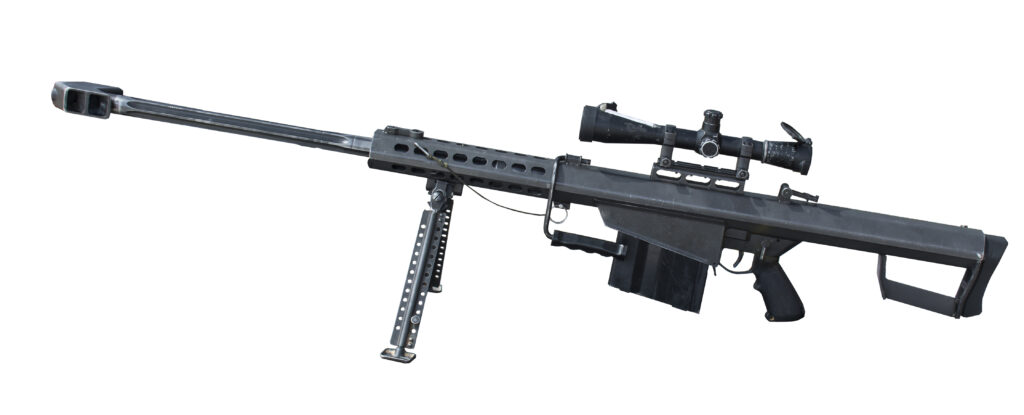
Guided munitions aren’t exactly new. We’ve had guided missiles for decades, even man-portable stuff like the famed Stinger rocket launchers. Colin Powell once said, “We can hit a quarter-inch target under a bridge without destroying the bridge.” The problem with guided munitions is the size. It’s rockets, it’s missiles—it’s large and it’s heavy. Until now. Now we have two competitors aiming to create guided .50 BMG cartridges.
A Guided .50 BMG?
Firearms firing .50 BMG rounds aren’t known for being small, but they are a lot smaller and lighter than Stinger missiles, rocket launchers, and Sidewinders. Smaller guns and smaller munitions allow for a guided round with a lot less potential for harming civilians. There is a lot of potential for these munitions and how they can integrate with the infantry. Let’s examine the two programs aiming to take the cake.
The DARPA EXACTO Round
Those pesky scientists at DARPA are working on something called the EXACTO round. EXACTO stands for Extreme Accuracy Tasked Ordnance. This .50 BMG cartridge combines a smart cartridge with a high-tech optic and a remote control.
The idea is to produce a cartridge that could change direction mid-flight or to compensate for wind, rain, and similar factors. The EXACTO round isn’t a remote control in the same way as a drone. You can’t make it turn around or take a 90-degree turn. Think of the EXACTO round more like a gentle push than total remote control.

DARPA intends to produce this in fire-and-forget technologies. Imagine setting an M2 or Barrett M82 on a hill and leaving it behind when things get rough. The system could provide precision fire on targets while a sniper team bails out, or is never even there beyond setting the gun up.
Additionally, the EXACTO round could correct for shooter mistakes. In fact, the shooter won’t have to do the math for windage, bullet drop, or the effect of the earth spinning. It could simplify the work of snipers and make shots fast and more accurate.
The Sandia National Laboratories Guided Bullet Technology
Sandia National Laboratories has produced its own guided bullet technology. SNL is a private company that’s been involved in government procurement and development for quite some time. Their guided bullet technology also uses a .50 BMG cartridge but relies on laser designation rather than remote control.

The laser designating rounds are fired from a smooth bore. The nose of the bullet features an optical sensor along with counterbalancing mass and stabilizing strakes. Small fins control the projectile and allow it to steer its way to the target.
This system could also be paired with fire-and-forget systems and remote laser designators. According to SNL, the rounds are cost-effective, but no price is quoted.
So Where Are They?
Testing was conducted as far back as 2015, and the results were promising. Sadly, there doesn’t seem to be much movement on these guided .50 BMG rounds. However, in an era of drone warfare, the guided .50 BMG round might be a viable option.
Small, explosive drones have made life difficult for snipers and might even push them out of the current meta of modern warfare. The USMC even got rid of its sniper platoons to face new threats. A drone could eliminate a guided anti-material rifle with fire-and-forget capabilities, but it would be casualty-free.

The smaller package and profile of the system and its ability to hide from thermal cameras could make them very lethal components in modern warfare. You could even pair this technology with land-based drones and have an anti-material option that’s entirely remote-controlled.
The possibilities are exciting, and when it comes to combating America’s enemies, embracing high-tech solutions will enhance their efficiency and save American lives. I’d love to see the development of these platforms continue. Here’s to America’s guided .50 BMG rounds.



